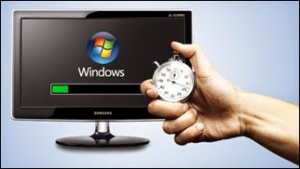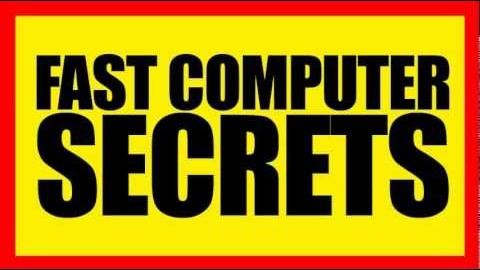One thing that can make your old computer feel like new again
One thing that can make your old computer feel like new again
By Jeandre de Beer / Kim Komando
 We have talked quite a bit about speeding up your computer. Whether it is streamlining start-up, adding RAM or tracking down resource hogs, there is always something you can try.
We have talked quite a bit about speeding up your computer. Whether it is streamlining start-up, adding RAM or tracking down resource hogs, there is always something you can try.
Of course, most tactics come back to compensating for one thing: the hard drive. It’s by far the slowest part of any modern computer.
While the rest of the computer is operating in nanoseconds and microseconds, a hard drive works in milliseconds – more than a thousand times slower. Your processor can spend precious time just waiting around for information.
That’s why large-scale solid-state hard drives are gaining popularity. If you aren’t familiar with the term, let me explain.
A conventional computer hard drive uses spinning magnetic disks to store information. An arm moves across the disk to find information, similar to an old turntable record player.
A solid-state drive is a big block of flash memory. It’s really just a USB drive or memory card, with no moving parts to manage.
The benefit of an SSD is that it’s much faster
It works in microseconds – lighter, cooler, uses less electricity and is harder to damage than an HDD.
The drawbacks? Higher cost and smaller storage sizes.
However, those drawbacks are becoming less of a problem. Your smartphone and tablet use solid-state storage, and SSDs are used in most Mac laptops. That’s bringing down the price and bringing up the sizes.
So, are we finally to the point where an SSD makes sense for the average computer user?
Well, it depends.
If you are getting a laptop for travel, for example, an SSD makes a lot of sense. While modern laptop drives are really good about surviving damage, an SSD can really take punishment.
It’s pretty immune to shock and vibration, and it uses less electricity, which is better for battery life.
Plus, the faster start time it provides is a big advantage when you’re turning your laptop on and off several times a day. Boot times can be 10 seconds or less.
For a desktop, an SSD is still a bit of a luxury. Even with the dropping prices, you’ll be paying $150 to $200 for an SSD in the 256 gigabyte range. For the same money, you can get a 4 terabyte (4,000GB) HDD.
Still, many people find the speed tradeoff worth it.
Obviously, you’re not going to be storing high-definition movies on an SSD for now. But for an average amount of documents, photos and music, you should be fine.
Check your current hard drive to see how much of it you’re actually using; you might be surprised how much space is free.
Even if your current drive is full, you might find that it’s mostly old files, or a certain file type like music or photos. It might make sense to move those files to a large inexpensive external drive.
Many high-end computers now ship with two drives.
One is a small SSD and the other is a large conventional drive. The operating system and programs live on the SSD so they can take advantage of the speed while the conventional drive is there for storing large files.
If you’re upgrading or building a computer, you can snag a 32GB or 64GB SSD and a 1TB HDD. Even together, they’ll cost you less than a single 256GB SSD.
You might also look into a hybrid hard drive. This combines a small SSD and a large HDD in a single package.
Your frequently used files are kept on the SSD portion to make your computer run faster on familiar tasks.
While hybrids aren’t as fast as a true SSD, they are less expensive. Overall, it’s a convenient way to have the best of both worlds.
Just note that SSDs and hybrids only make sense on computers running Windows 7 and 8 – or OS X if you’re a Mac person.
Vista and XP don’t have the programming in place to take full advantage of solid-state memory. Also, if you’re still using XP, you need to upgrade now anyway.





Leave a Reply
Want to join the discussion?Feel free to contribute!